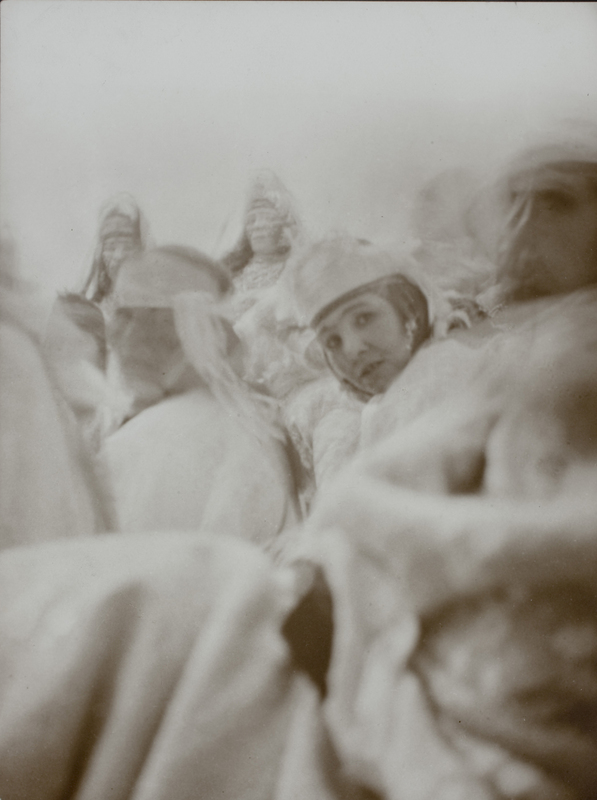Freezing Memory
The impulse to freeze memory, to objectify by way of photographs, may also help explain the taking of culturally prohibited, illicit photographs. Emily Sibley Watson describes two such instances in a letter from Tangier, the first when visiting women in a harem: "I managed to take one picture when they were not noticing which I hope will come out, for when I asked if they would let me take one they said “no” very decidedly." She writes of visiting a female-only wedding celebration later that day: "Again I tried my Kodak but here they will not let you take them if they know it and you have to be very careful not to let them know. But, oh! I do hope they will come out.”
Mid-19th century travelers to Egypt would have been advised by guidebooks not to make sketches or take photographs of people, due to Islamic codes against figurative representation. While there is plenty of visual evidence that mid-century travelers ignored such prohibitions, the advent of smaller cameras increased the temptation. Derek Gregory[ii] notes that the small size (by 19th century standards) of the early Kodak cameras and their ease of use combined “to allow amateur photographers to take delight in stealing upon their subjects unawares.” Western concerns for privacy “were rarely extended to the inhabitants of Egypt, though, where travelers and tourists had long assumed that every event was a show staged for their consumption and that, with very few exceptions, they had a natural right to gaze. Funerals, weddings, prayers: all were assumed to be open to the fascinated eyes of European and American spectators.”[iii] Indeed, early 20th century guidebooks would provide suggestions for how tourists could sneak up on and “shoot” their unwitting subjects.
Between Aswan and Luxor, Emily Sibley Watson writes her mother that her husband had supplemented his Kodak with another, unidentified camera: “Jimmie bought a camera in Cairo as we were afraid the Kodak film might not come out well, and he has developed the pictures which are very successful so we shall have some beautiful photographs to show you when we return.” Egypt’s blowing sands may have posed a particular danger, even for cameras designed to be sent back to Kodak for development. While probably an excellent amateur photographer, it is hard to imagine James Sibley Watson developing photographs on board the Sesostris; however, it is conceivable that the larger towns along the Nile already had facilities for developing photos. By 1911, almost twenty years later, amateur photographer Douglas Sladen, in his Queer Things About Egypt, would complain about the proliferation of shops in Luxor and Aswan offering Kodak film and developing services: “if you walked down the front you would think that nearly every shop belonged to the Eastman Company, you get so tired of the word kodak.”[iv]
[i] Sontag, Susan. On Photography, quoted in Gregory, Derek. “Emperors of the Gaze: Photographic Practices and productions of space in Egypt, 1839-1914” in Joan M. Schwartz & James R. Ryan, eds., Picturing Place: Photography and the Geographical Imagination, London: I.B. Tauris & Co., 2003, p.211.
[ii] Gregory, p. 213.
[iii] Gregory, p. 214-215.
[iv] Sladen, Douglas, Queer Things About Egypt, Philadelphia: Lippincott, 1911, p. 353.

